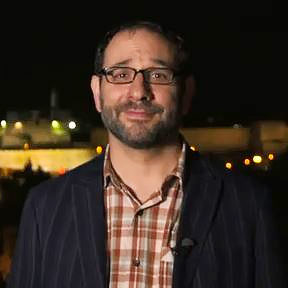Turn It Again: Torah Wisdom for Today
In Pirkei Avot, a book of maxims in the Mishnah, an ancient rabbi, Ben Bag-Bag said about Torah study, “Hafokh bah, va’Hafokh vah, d’khola bah.” Turn it over and over, for everything is in it. For two thousand years, that’s what Jews have done. Here is another turning.
Parsha Vayikra 2025
The Priest’s Sin is Ours
For many, the sacrificial laws in the Book of Leviticus may seem distant from our contemporary concerns. However, a deeper examination reveals how these ancient laws continue to speak to us today. To understand this connection, let’s look at Leviticus 4:3:
“If it is the anointed priest has incurred guilt, so that blame falls upon the people, he shall offer for the sin of which he is guilty a bull of the herd without blemish as a sin offering to YHVH.”
This verse explores how the sin of the priest has consequences for the entire community, revealing a complex moral lesson about leadership, communal responsibility, and the shared fate of a community and its leader. Before we can understand how these are linked, we need to grasp the core halakhic issue in Leviticus 4:3. When a priest sins, he is required to bring a sing offering.
Rashi offers important insight here, explaining that the priest is only liable for a sin offering if his mistake arises from ignorance of the law or a misjudgment leading to an incorrect decision. In other words, the priest’s sin occurs when he fails to uphold the law, thus failing in his role as a spiritual leader of the people. This failure is particularly significant because the priest holds the unique position of interceding on behalf of the people before God. His misjudgment disrupts the entire process of atonement, affecting the spiritual health of the entire community. The Talmud (Horayot 7a) confirms this, stating that a priest’s error can lead to the people’s guilt because the community relies on him for guidance and atonement.
The offering, in this case, serves to restore the relationship between the priest, the people, and God. The priest, as the leader and intercessor, is meant to provide atonement for the people. If he himself sins, it creates a rupture in the atonement process, leaving the people “under guilt,” as Rashi notes. This highlights the priest’s unique position—not just as an individual but as a representative of the community’s spiritual well-being. His sin affects the entire nation, making the sacrificial law both a personal and communal matter.
Leadership and the Shared Responsibility of the People
A key moral lesson embedded in Leviticus 4:3 is the concept of shared responsibility between leaders and the communities they serve. Sforno, a Renaissance-era commentator, argues that the priest’s error is often influenced by the behavior of the people. He suggests that the High Priest, typically the least likely to sin, can be led astray by the sinful actions of those he leads. Sforno’s perspective provides a window into the worldview of his time, when people trusted in the moral integrity of their leaders to a greater extent.
Because of this world view, the priest’s failure to maintain moral and spiritual purity becomes a reflection of the people’s own failings. While the sort of trust and esteem for a generation’s leaders is not shared in today’s world, Sforno’s key insight has enduring worth: a leader’s actions are not isolated from the condition of the people they lead.
The Talmud (Berakhot 34b:29) offers a parallel example, discussing how a cantor’s errors in prayer are seen not only as the chazan’s personal failings but as affecting the entire congregation. This idea mirrors the situation in Leviticus 4:3, where the priest’s sin is not just his own but a reflection of the community’s moral state. The priest, as a spiritual guide, is influenced by the people he leads. When a community’s spiritual health is compromised, their leader’s moral integrity can also be endangered.
Or HaChayim expands upon this idea, arguing that the High Priest’s sin is evidence that the community has not provided sufficient merit to protect him from error. The merits of the community are crucial in ensuring the priest’s spiritual strength, and when these merits are lacking, the priest becomes susceptible to sin.
In modern terms, we might interpret this notion of z’chut as ‘social capital’—the strength of community ties, shared values, and trust that sustain a society in times of challenge. Those marked by low levels struggle when crisis hits, losing the capacity to support its members and promote positive outcomes.
When we view Sforno’s notion of merit through this lens, it is easier to see how an individual priest’s sin impacts the whole community, so that all bear the consequences. This shared responsibility highlights a key aspect of Jewish leadership: the leader is not an isolated figure but is intrinsically linked to the spiritual state of the people.
The Ma’or VaShemesh, referencing the idea that “from the wicked comes forth wickedness” (I Samuel 24:13), underscores the contagious nature of sin. A failure in one area can spread and affect both individuals and their leaders. The communal nature of sin means that when the people fail to live up to their moral and spiritual obligations, their leader is vulnerable to falling as well. This shared responsibility is not limited to the priest but extends to the entire community.
This interconnectedness between leader and community teaches that leadership is not just a function of the individual but is a reflection of the collective moral state. The priest, who is tasked with interceding on behalf of the people, becomes entangled in the spiritual health of the community. His failure to maintain purity is a sign of the larger moral failings within the people he leads.
When the Bible analyzes a social problem, it normally provides a way out of the impasse. In this case, Leviticus 4:3 teaches that the path to atonement requires both personal repentance and communal support. The priest’s sin-offering, which must be burned with no benefit to anyone, signifies the severance between the priest and the people. This offering is a necessary step to restore the balance between the priest, the community, and God. Yet, it also carries a lesson: atonement is not just an individual endeavor but a collective one. Trust, once shattered, requires corrective actions that entail genuine sacrifice. It must be earned by reinvesting in the relationship. That responsibility is not the priest’s alone, for the community must also engage in self-examination and repentance. The lesson here is clear: leadership and community are bound together in a shared moral responsibility. The priest’s failure is a reminder that the community’s moral failings can affect the entire system, including its leaders.
Despite the profound wisdom in Leviticus 4:3, this insight has been difficult for modern Westerners to fully grasp on a visceral level. Western societies in the modern era have tended to prioritize individualism and personal accountability. The notion that a leader’s sin could be attributed to the moral failings of the community may feel counterintuitive. Increasingly, however, there is a renewed understanding of how deeply intertwined our destinies are.
This burgeoning shift in perspective allows us to better assimilate the Torah’s deep moral truth: leadership is not an isolated role, but a reciprocal and participatory reflection of the moral state of a society.
This shared responsibility comes with a tremendous benefit. In polarized times, when leadership may struggle to maintain spiritual and moral integrity, the average citizen also plays a critical role. By doing the right thing when those around us fail to do so, we contribute to the long process of rebuilding a society marked by high levels of social capital. May we merit to see that outcome.




